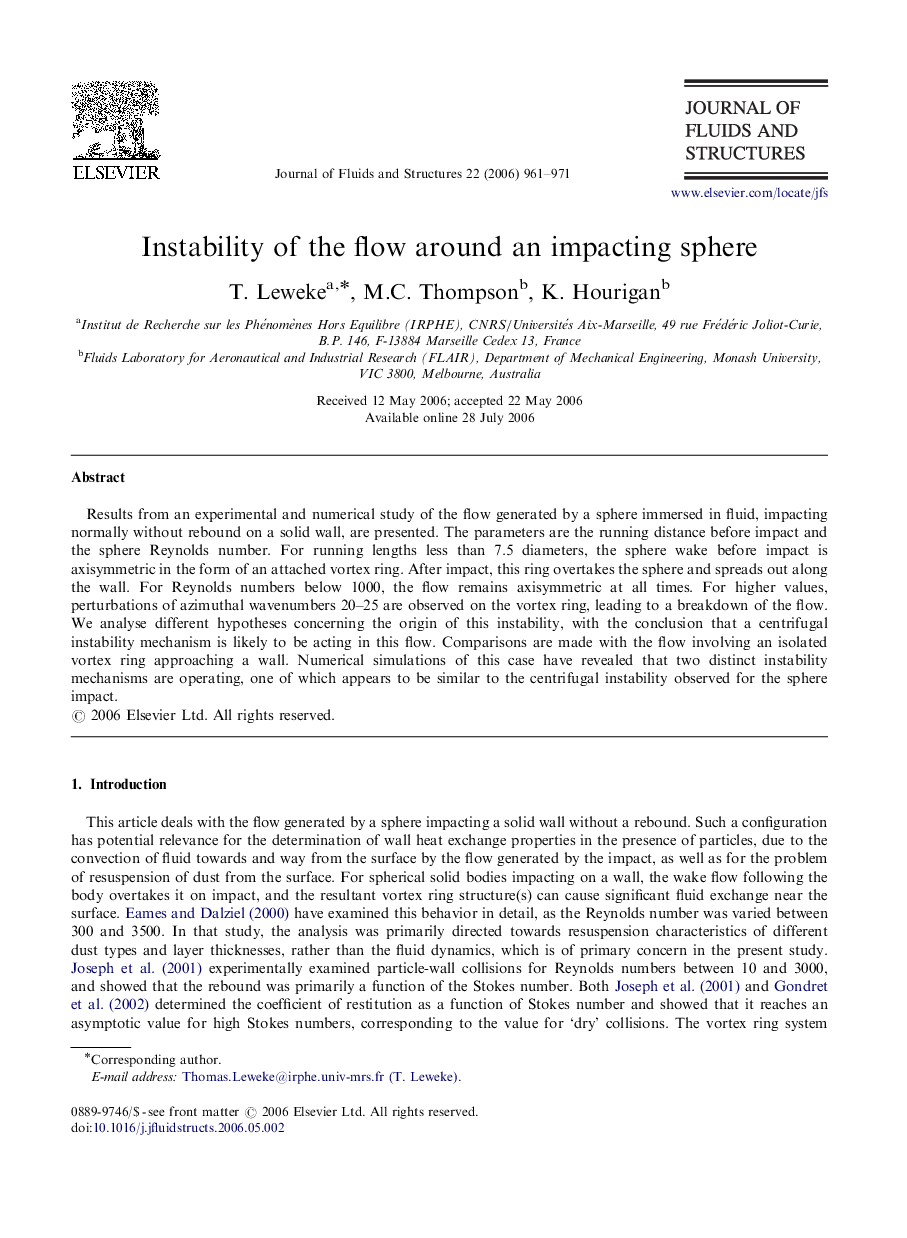| Article ID | Journal | Published Year | Pages | File Type |
|---|---|---|---|---|
| 789887 | Journal of Fluids and Structures | 2006 | 11 Pages |
Results from an experimental and numerical study of the flow generated by a sphere immersed in fluid, impacting normally without rebound on a solid wall, are presented. The parameters are the running distance before impact and the sphere Reynolds number. For running lengths less than 7.5 diameters, the sphere wake before impact is axisymmetric in the form of an attached vortex ring. After impact, this ring overtakes the sphere and spreads out along the wall. For Reynolds numbers below 1000, the flow remains axisymmetric at all times. For higher values, perturbations of azimuthal wavenumbers 20–25 are observed on the vortex ring, leading to a breakdown of the flow. We analyse different hypotheses concerning the origin of this instability, with the conclusion that a centrifugal instability mechanism is likely to be acting in this flow. Comparisons are made with the flow involving an isolated vortex ring approaching a wall. Numerical simulations of this case have revealed that two distinct instability mechanisms are operating, one of which appears to be similar to the centrifugal instability observed for the sphere impact.
